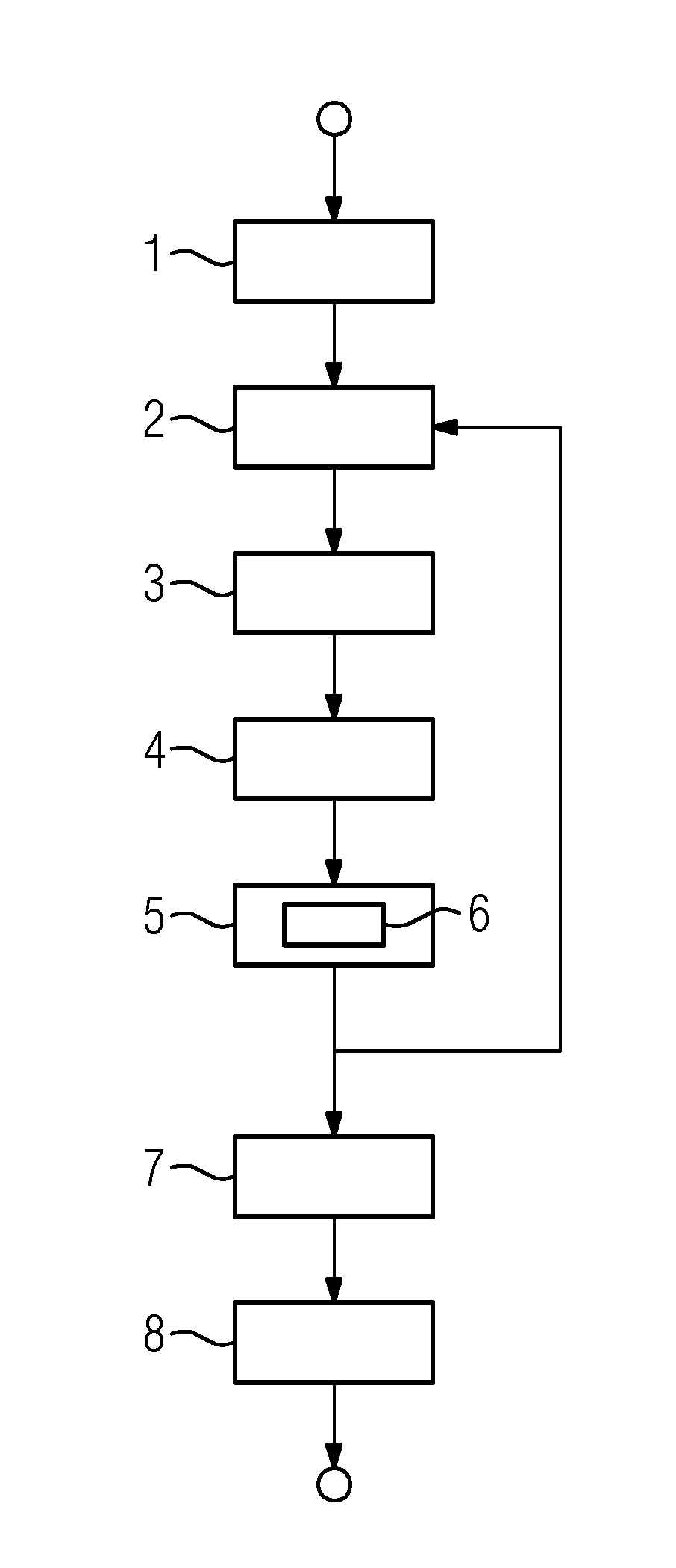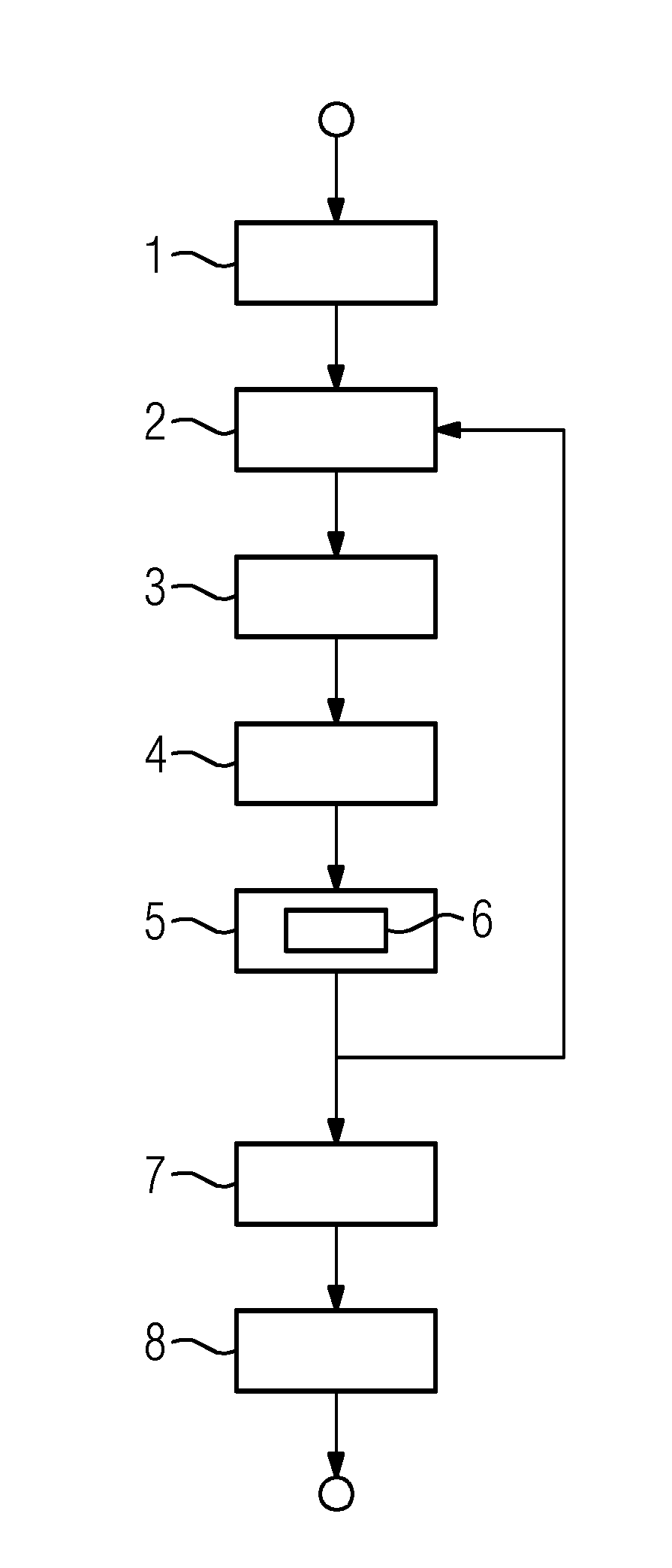Segmenting an angiography using an existing three-dimensional reconstruction
a three-dimensional reconstruction and segmenting technology, applied in the field of segmenting a two-dimensional angiography, can solve the problems of inaccurate geometric representation of stenosis geometry, low spatial resolution, and estimation of blood through vascular cross-sections, and achieve the effect of increasing the accuracy of three-dimensional angiography and facilitating compensation or correction
- Summary
- Abstract
- Description
- Claims
- Application Information
AI Technical Summary
Benefits of technology
Problems solved by technology
Method used
Image
Examples
Embodiment Construction
[0034]In a first act 1, a three-dimensional reconstruction of a vessel of a body (e.g., a coronary blood vessel) is provided. A three-dimensional reconstruction is provided in the form of a recorded data record. The recorded data record is produced by a first imaging device (e.g., a computed tomography (CT) device). A next act 2 involves further providing a first two-dimensional angiographic recording of the coronary blood vessel of a further imaging device (e.g., an x-ray device). This further provision 2 also takes place on the computing apparatus (e.g., in the form of an angiography data record).
[0035]In the example shown, the recorded data record and thus the three-dimensional reconstruction of the vessel of the body are thus registered 3 with the angiography data record, and thus, the two-dimensional recording of the vessel of the body that is present, for example, as a coronary blood vessel. This is followed by projecting 4 spatial information of the three-dimensional reconstr...
PUM
 Login to View More
Login to View More Abstract
Description
Claims
Application Information
 Login to View More
Login to View More - R&D
- Intellectual Property
- Life Sciences
- Materials
- Tech Scout
- Unparalleled Data Quality
- Higher Quality Content
- 60% Fewer Hallucinations
Browse by: Latest US Patents, China's latest patents, Technical Efficacy Thesaurus, Application Domain, Technology Topic, Popular Technical Reports.
© 2025 PatSnap. All rights reserved.Legal|Privacy policy|Modern Slavery Act Transparency Statement|Sitemap|About US| Contact US: help@patsnap.com


